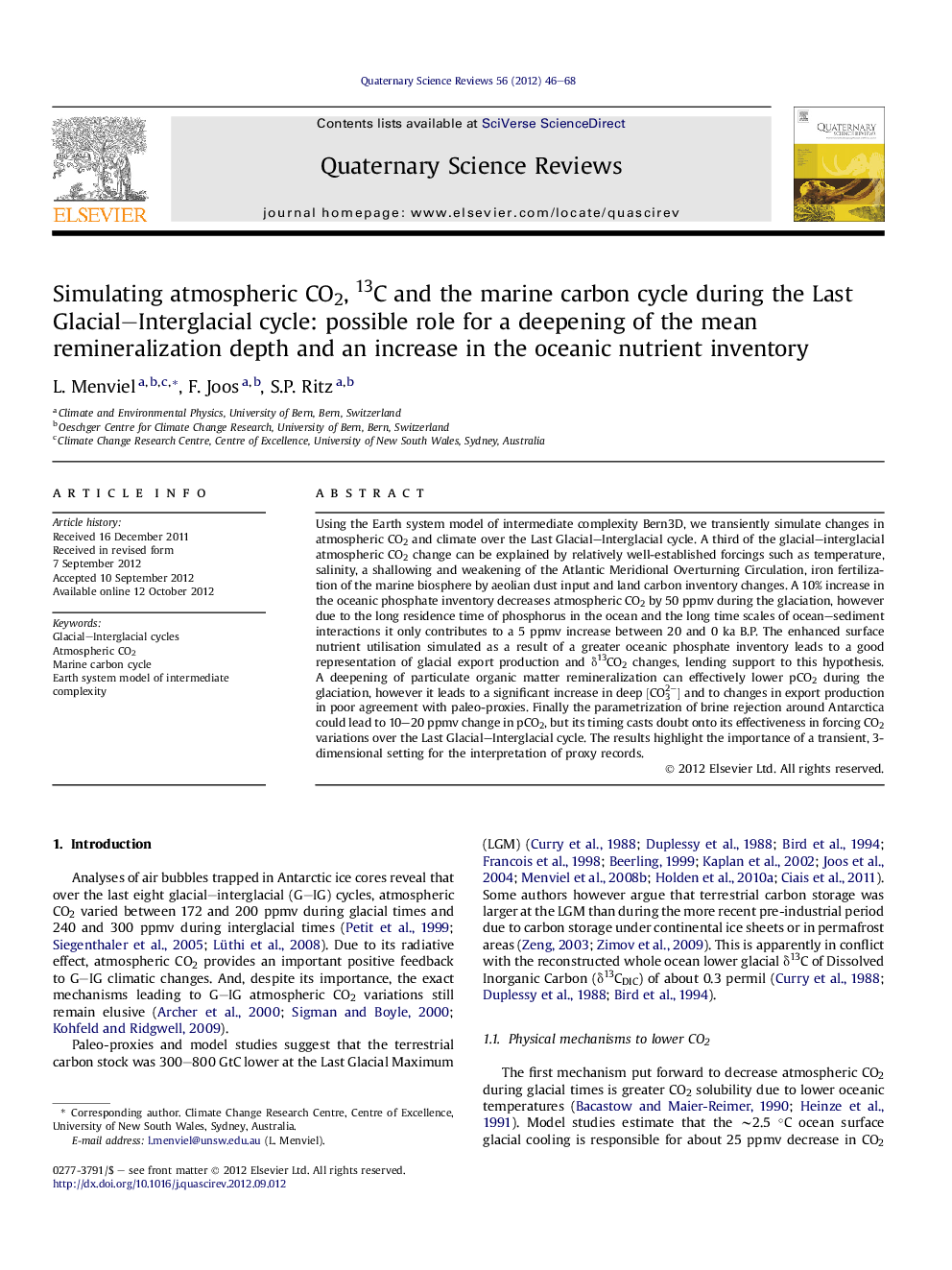| کد مقاله | کد نشریه | سال انتشار | مقاله انگلیسی | نسخه تمام متن |
|---|---|---|---|---|
| 4737110 | 1640878 | 2012 | 23 صفحه PDF | دانلود رایگان |

Using the Earth system model of intermediate complexity Bern3D, we transiently simulate changes in atmospheric CO2 and climate over the Last Glacial–Interglacial cycle. A third of the glacial–interglacial atmospheric CO2 change can be explained by relatively well-established forcings such as temperature, salinity, a shallowing and weakening of the Atlantic Meridional Overturning Circulation, iron fertilization of the marine biosphere by aeolian dust input and land carbon inventory changes. A 10% increase in the oceanic phosphate inventory decreases atmospheric CO2 by 50 ppmv during the glaciation, however due to the long residence time of phosphorus in the ocean and the long time scales of ocean–sediment interactions it only contributes to a 5 ppmv increase between 20 and 0 ka B.P. The enhanced surface nutrient utilisation simulated as a result of a greater oceanic phosphate inventory leads to a good representation of glacial export production and δ13CO2 changes, lending support to this hypothesis. A deepening of particulate organic matter remineralization can effectively lower pCO2 during the glaciation, however it leads to a significant increase in deep [CO32−] and to changes in export production in poor agreement with paleo-proxies. Finally the parametrization of brine rejection around Antarctica could lead to 10–20 ppmv change in pCO2, but its timing casts doubt onto its effectiveness in forcing CO2 variations over the Last Glacial–Interglacial cycle. The results highlight the importance of a transient, 3-dimensional setting for the interpretation of proxy records.
► Transient simulations of atmospheric CO2 variations over the Last Glacial–Interglacial cycle are performed.
► 30 ppmv CO2 decrease is obtained by well-known processes (T, S, overturning, Fe fertilization, vegetation changes).
► pCO2 reacts sensitivity to a moderate increase of the mean remineralization depth and of the oceanic P inventory.
► Ocean–sediment interactions play an important role in decreasing CO2 during the glaciation.
Journal: Quaternary Science Reviews - Volume 56, 21 November 2012, Pages 46–68